Restoring Santa Rosa’s Tree Line
200 Trees, 25 Tree Planters, and 1 Beloved Dog
It’s not every day that Snoopy shows up to help plant trees. But when you’re restoring the tree canopy in the hometown of cartoonist Charles “Sparky” Schulz, it’s bound to happen!

In October, volunteers and community members came together to plant trees in Santa Rosa, California. The Coffey Park neighborhood was completely destroyed in the Tubbs Fire in 2017 — no houses, trees, or shrubs were spared as the blaze made its way through. This planting was part of ongoing efforts to help the community become whole again. And since the city is home to the Charles M. Schulz Museum, it was only natural that Peanuts Worldwide LLC got involved.
Snoopy and the gang (including Jeannie Schulz and Craig Schulz, Sparky’s widow and son) gathered to
plant 150 coast live oaks, 40 blue oaks, and 10 California buckeyes. All three of these species are native to the area and offer some level of fire resistance, a key component in today’s California landscape.
Santa Rosa resident Kathy McConnell was among the volunteers that day. “I wanted to be a part of helping our community recover from a devastating fire,” she said. “Just seeing the new growth helps to make everyone feel better.”
As the trees grow, they will provide much-needed benefits to the neighborhood, including cooling shade, improved air quality, stormwater management, mitigation of fire impact, and habitat for area birds and animals. Beyond the ecosystem benefits, these trees are also a symbol of hope, a sign of progress. Each addition to the community’s tree canopy makes it feel more like home.
SEPTEMBER/OCTOBER 2023
Restoring the Heart of Puerto
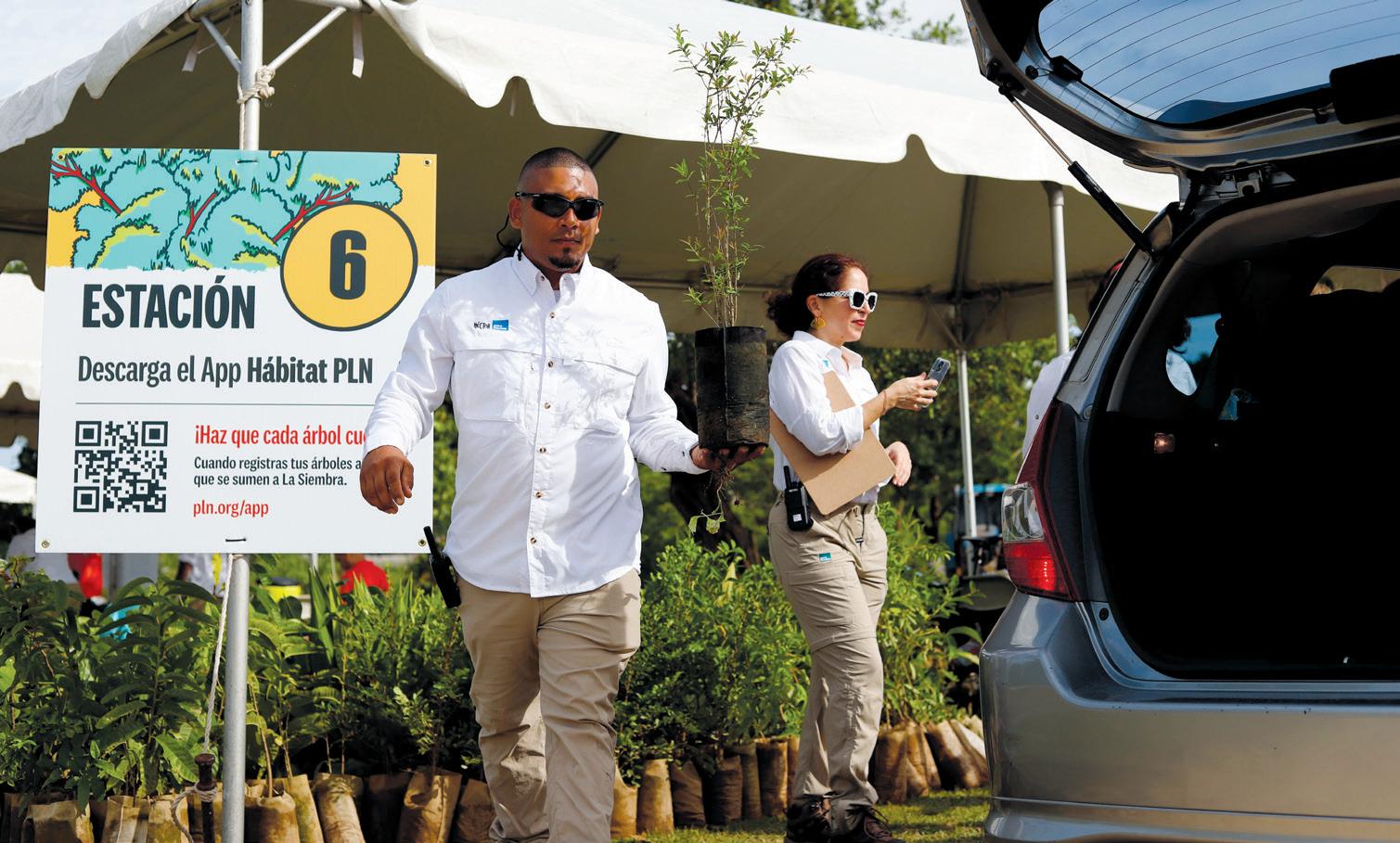
Planting native trees in the
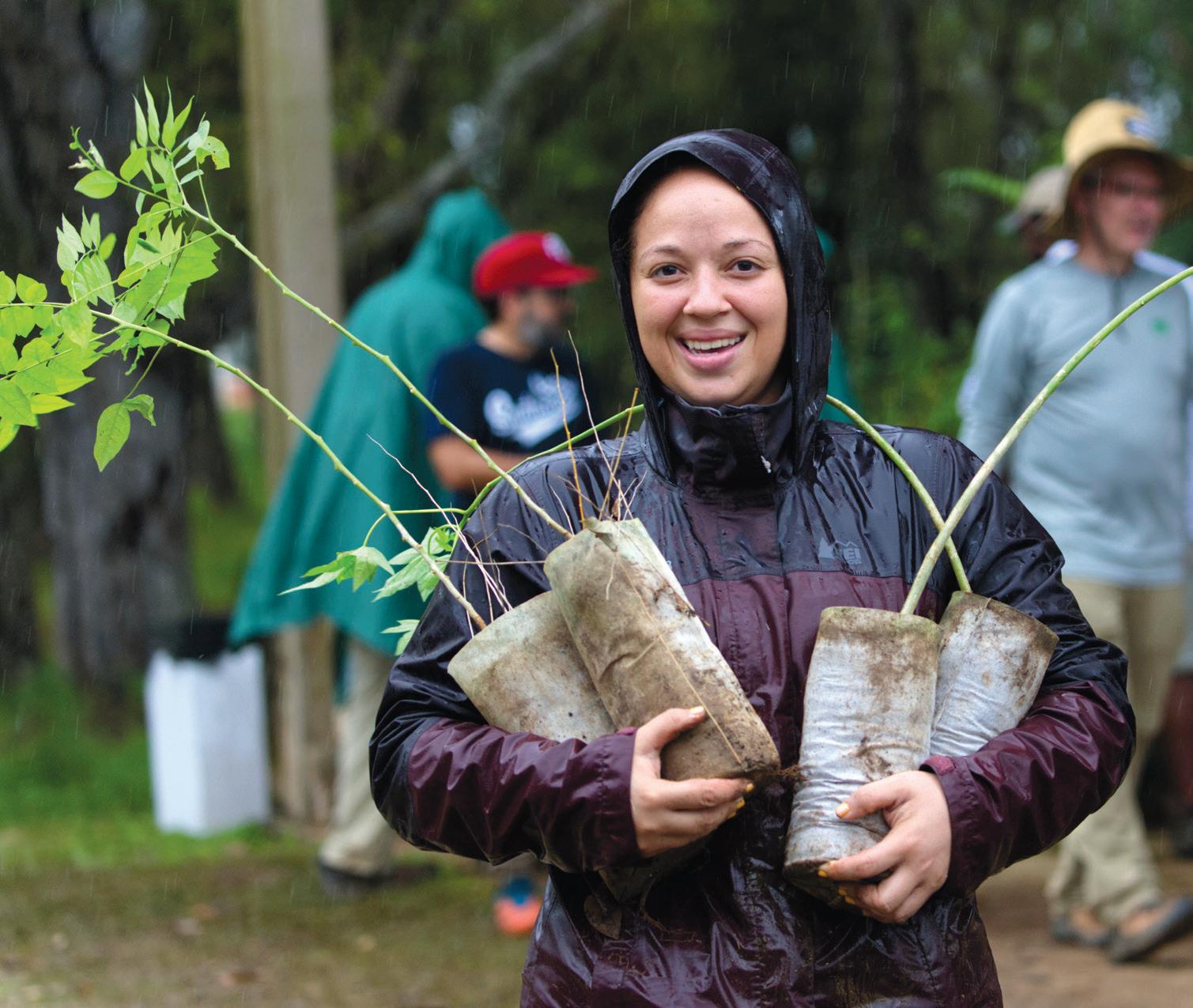

Sixty years’ worth of natural treefall in one day. That was NASA’s estimation of the impact Hurricane Maria had on Puerto Rico’s forests.
This deadly storm hit mainland Puerto Rico in September of 2017 as a category 4 hurricane, carving a path of devastation across the island. Amid the death toll, lack of power, and destroyed infrastructure was also the astonishing loss of 30% of the island’s trees.
The typically lush landscape looked barren, almost alien, to local residents. It was just as unfamiliar for the wildlife. “The bees were going crazy looking for food. They didn’t have flowers; they didn’t have anywhere to go,” said Judy Galib, foundations and development coordinator with Para la Naturaleza. “The little birds, they didn’t know where to go. So you saw them in the street because they didn’t have the canopy. They didn’t have their nest.”
Local tree planting nonprofit Para la Naturaleza has made a long-term commitment to help restore the land ravaged by Hurricane Maria — pledging to plant 750,000 trees within seven years. With the scale of this project and the well-being of Puerto Rico’s biodiverse ecosystems at stake, the staff at Para la Naturaleza know they must replant the landscape in the right way. That’s why they’re combining a focus on native tree species with modern technology to ensure Puerto Rico can recover its tree canopy — and its identity.
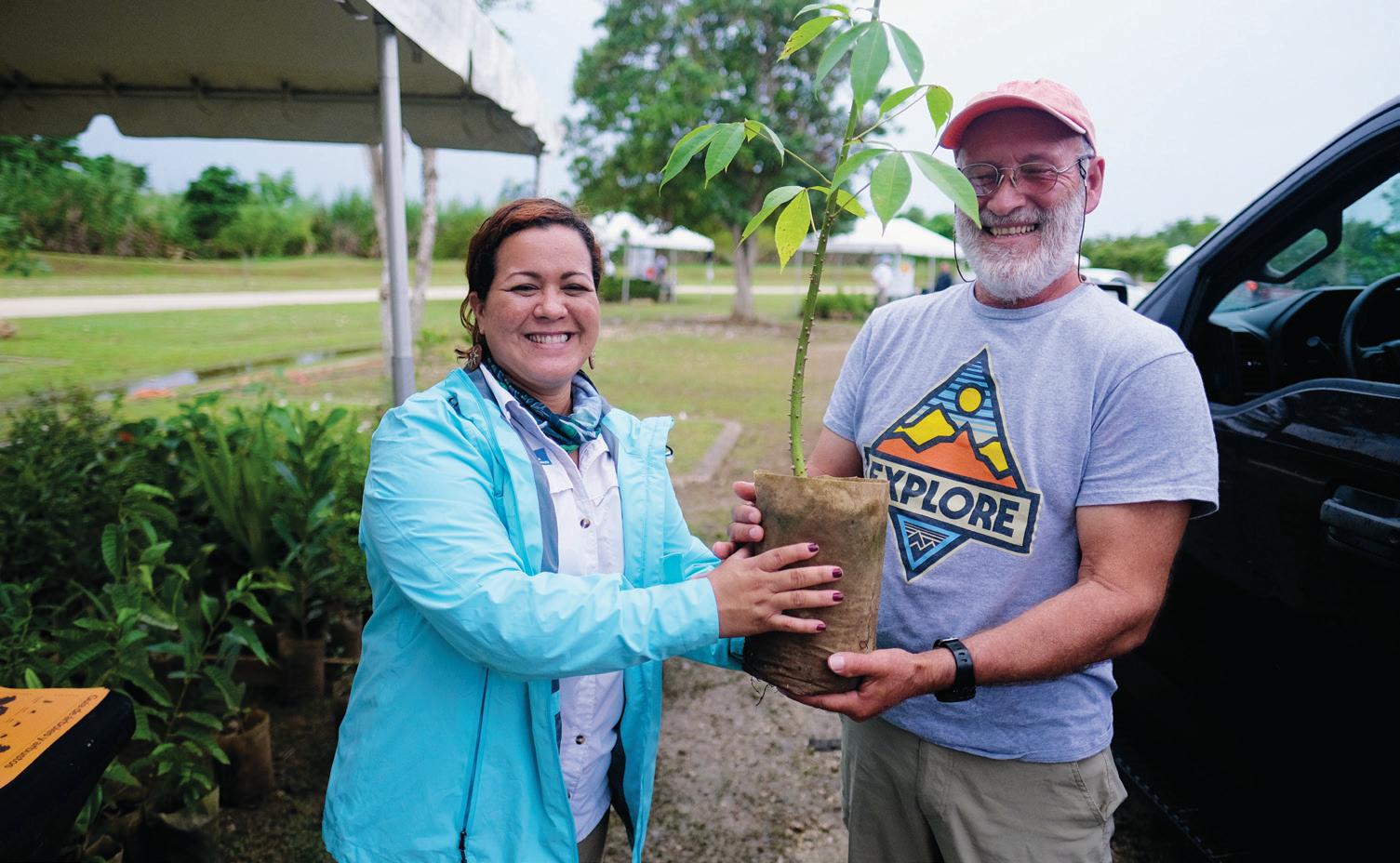
Returning to the Island’s Roots
When 155-mile-per-hour sustained winds whipped through Puerto Rico, the
2 Arbor Day Foundation Oak Society Insights • September/October 2023
Puerto Rico
the wake of Hurricane Maria
island felt Maria’s wrath. And because a significant portion of tree cover here wasn’t native, Para la Naturaleza says, the tree canopy suffered. Nonnative tree species brought into the country over the last century — for wood value, fruit, shade for coffee shrubs, or even ornamental purposes — weren’t equipped to weather severe tropical storms.
With optimal growing conditions (good soil, plenty of rain, and ample sunshine), trees thrive in Puerto Rico. Many of the nonnatives grow too quickly here to develop dense wood. It’s an issue that you don’t see with native trees. “They grow slower, and they have better wood. They are more solid. They withstand a lot more wind,” said Ahmed Pérez Lugo, reforestation superintendent with Para la Naturaleza.
Replanting efforts are focused on a tree canopy that can hold up better in hurricane-force winds. Because the hurricanes will continue. And they have the potential to only get more frequent and more intense as climate change tightens its grip.
In addition to planting in forests and mangroves, urban trees are also a priority. Last fall, Para la Naturaleza distributed more than 28,000 trees to residents at six different locations throughout Puerto Rico. By spreading out the pickup locations, they ensured that more homeowners could access trees. And getting trees in the hands of homeowners is critical to restoring the community tree canopy. “When people plant trees, they have a sense that they’re doing something for the island,” said Judy.

Some of the species community members could choose to plant in their yards included capá prieto (Spanish elm), kapok, cedro (Spanish cedar), guaraguao, malagueta, guava, and maga (whose blossom is the official flower of Puerto Rico).
Smarter Technology for Greater Success
The long-term health of these newly planted trees is key to the success of restoring the island’s environmental identity. That’s why each of Para la Naturaleza’s plantings
includes five years of tree care and monitoring. While the care is done by hand, ongoing monitoring is managed with a drone. This technique is newer for the organization, and the technology is state-of-the-art. An infrared camera and advanced GPS mapping allow for detailed monitoring every month. The most important marker they look for is survival.
All of this leads to improved results. Para la Naturaleza is seeing impressive tree survival rates — more than 80% compared with the 50% that they hear from other organizations. The higher survival rates are a direct result of this level of dedication to data collection and tree care. “For me, that’s the best indicator that the project was successful,” said Ahmed.
An app was also created to further engage Puerto Ricans in the tree planting efforts. With this app, they can find information about more than 200 native trees, register the location of the trees they have planted, and even schedule tree care reminders. And a map of the island is populated with each tree that has been planted — by both homeowners and Para la Naturaleza.
Para la Naturaleza is deeply committed to replanting Puerto Rico’s landscape the right way. The combination of science, nature, and technology means a healthy tree canopy that’s ready to weather the next storm. But more than that, their commitment means an important part of the island’s identity — and of people’s lives — is already growing back.

Arbor Day Foundation Oak Society Insights • September/October 2023 3
Welcome to The Garden
Oak Society member Don Allen is living the Foundation’s mission right in his yard
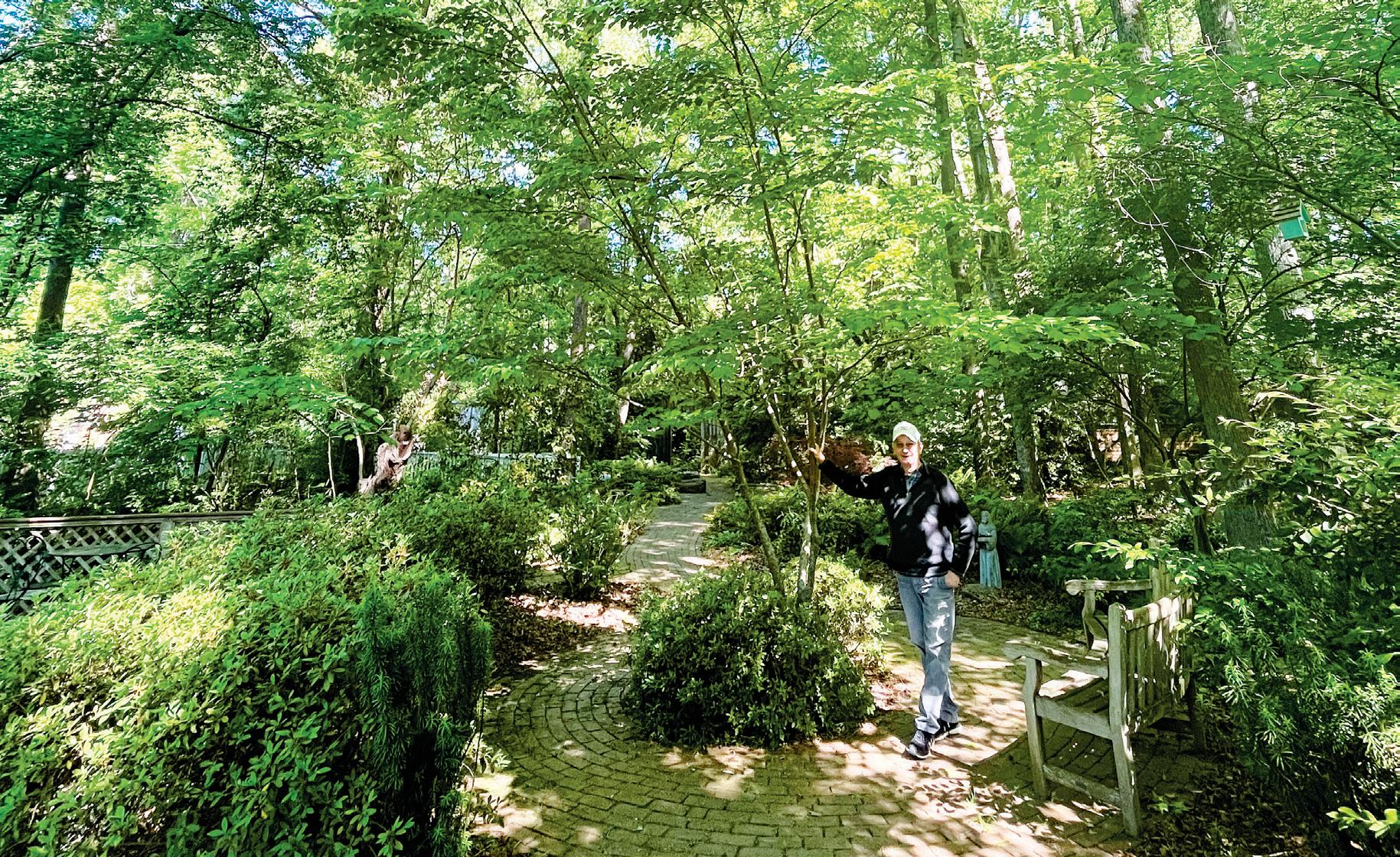
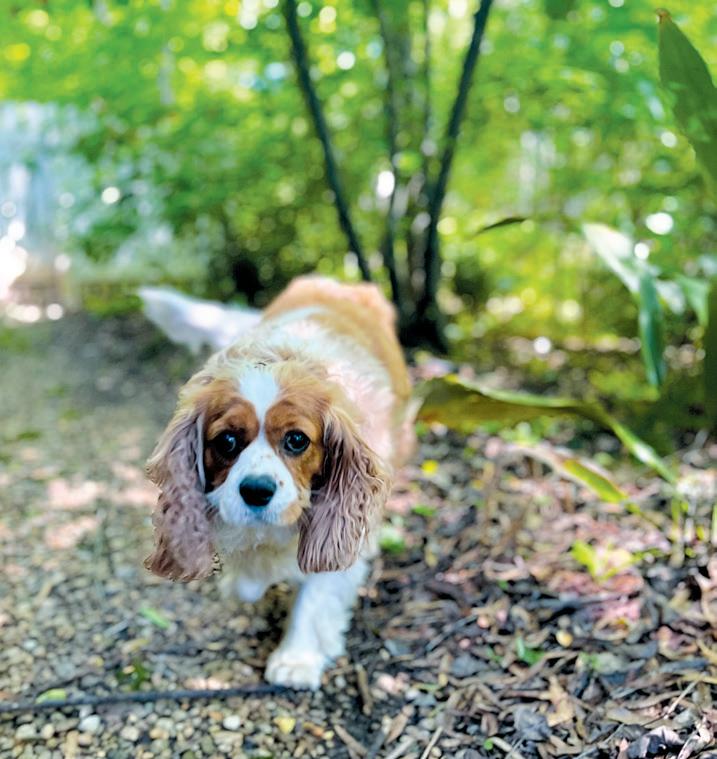

All are welcome. That’s Don Allen’s approach to the half-acre plot of land next to his house. Ever since he and his wife, Pam, moved into their Charlotte, North Carolina, home in 1983, they have been working to turn the space into a lush, tree-filled escape for the community. So far, they’ve created a parklike space with more than 50 trees surrounding a winding creek, and they’re not finished yet.

Don has been a member of the Arbor Day Foundation for 24 years, but his love of trees began at an early age. He grew up climbing the trees at his childhood home in Bowling Green, Ohio. Then his 7th grade biology teacher — Sam McCoy — engaged him further. “He taught all of us how to use a key to identify trees. It was just like a whole new world opening up,” said Don. “I’ll never forget him. He was a great, great teacher.”
Now Don has his own key that he uses regularly to identify trees. And he has put this passion to work as he creates his own arboretum. The transformation was gradual, but the result is absolutely breathtaking. Five different spaces include places to sit and simply enjoy the view. Nuthatches, cardinals, wrens, frogs, turtles, and an assortment of other wildlife can be found. And one special dogwood stands out — a tribute to Don’s father. “We had a ceremony, and I put a stone there to commemorate my dad,” he said.
This 30-year labor of love is also appreciated by the whole community. Everyone is invited to walk through the area and connect with nature. And though it doesn’t yet have an official name, Don has something in mind. “We’re thinking of naming it The Garden. Pam and I were sitting out there one time, and we could hear little kids going by asking their mom if they could go to the garden. The neighborhood kids, that’s what they call it.”
Don and Pam have built a legacy — a beautiful space for people to escape and engage with the trees. It’s the kind of contribution that will live on for generations to come.

Arbor Day Foundation 211 N. 12th St. Lincoln, NE 68508 50136801










